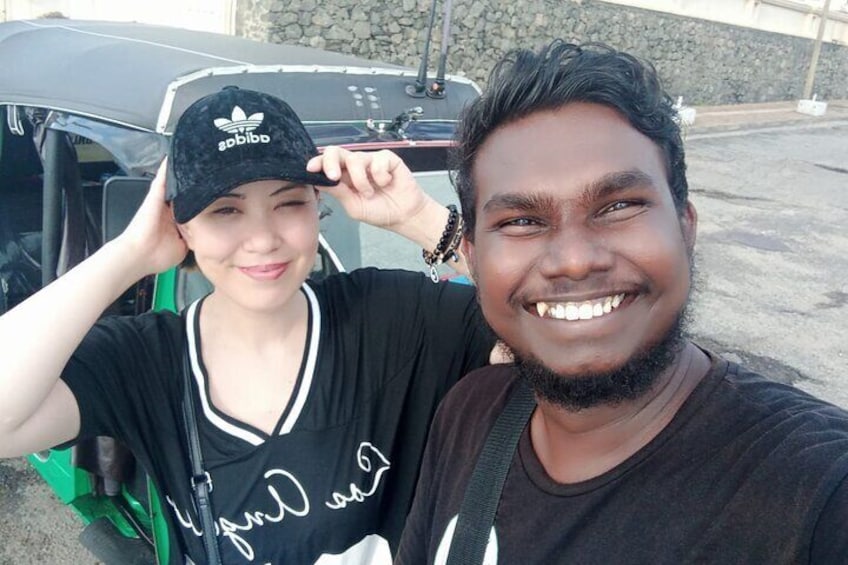Earn OneKeyCash when you sign in and book an activity





Colombo Tuk Tuk City Tour – Sightseeing Entry Fees Included
Features
- Free cancellation available
- 4h
- Mobile voucher
- Instant confirmation
- Selective hotel pickup
- Multiple languages
Overview
Welcome to Colombo!
Experience the vibrant city of Colombo like never before with our exclusive tuk-tuk city tour. Discover the charm of the city as we take you through its bustling streets, showcasing historic landmarks, authentic local culture, and delicious street food.
Our tour offers a truly immersive local experience, complete with interactions with friendly Colombo residents and insights into daily life in the city. Whether you're a couple, a family with children, solo traveler, or senior citizen, this tour is designed to be enjoyable and comfortable for travelers of all ages.
By the end of the tour, you’ll walk away with a deeper understanding of Colombo’s rich cultural heritage and unforgettable memories of your journey through the heart of the city. Book now for a unique and insightful adventure!
Activity location
- Temple of Sri Kailawasanathan Swami Devasthanam Kovil
- Colombo District Hindu Temple, No.11/15, Kovil Street, Captain's Garden, Maradana, Colombo-10
- 01000, Colombo, Sri Lanka
Meeting/Redemption Point
- Colombo Galbokka Lighthouse
- Chaithya Road
- 00100, Colombo, Western Province, Sri Lanka
Check availability
Colombo Tuk Tuk City Tour – Sightseeing Entry Fees Included
- 4h
- English
Pickup included
What's included, what's not
- Private transportation
- Bottled water
- Snacks
Know before you book
- Wheelchair accessible
- Infants and small children can ride in a pram or stroller
- Public transportation options are available nearby
- Infants are required to sit on an adult’s lap
- Transportation options are wheelchair accessible
- Not recommended for pregnant travelers
- Not recommended for travelers with poor cardiovascular health
- Suitable for all physical fitness levels
Activity itinerary
Temple of Sri Kailawasanathan Swami Devasthanam Kovil
- 15m
- Admission ticket included
Lotus Tower (Pass by)
Colombo Fort Railway Station
- 10m
- Admission ticket included
Colombo Fort (Pass by)
The Central Point - Economic History Museum (Pass by)
Colombo Fort Clock Tower (Pass by)
President's House (Pass by)
Post Office (Pass by)
Cargills Department Store (Pass by)
Grand Oriental Hotel (Pass by)
Pettah
- 15m
Old Town Hall
- 15m
Vegetable Market
- 15m
Kayman’s Gate Belltower
- 5m
Jami Ul-Alfar Mosque (Pass by)
Christian Reformed Church of Sri Lanka
- 15m
Floating market
- 10m
- Admission ticket included
Old Parliament Building (Pass by)
Colombo Port City
- 5m
- Admission ticket included
The Lighthouse
- 10m
- Admission ticket included
Colombo Port Maritime Museum
- 15m
- Admission ticket included
Zylen Tea
- 15m
- Admission ticket included
Gangaramaya (Vihara) Buddhist Temple
- 20m
Independence Memorial Hall
- 10m
- Admission ticket included
Cenotaph War Memorial
- 10m
- Admission ticket included
Colombo Municipal Council (Pass by)
Viharamahadevi Park (Pass by)
Location
Activity location
- Temple of Sri Kailawasanathan Swami Devasthanam Kovil
- Colombo District Hindu Temple, No.11/15, Kovil Street, Captain's Garden, Maradana, Colombo-10
- 01000, Colombo, Sri Lanka
Meeting/Redemption Point
- Colombo Galbokka Lighthouse
- Chaithya Road
- 00100, Colombo, Western Province, Sri Lanka